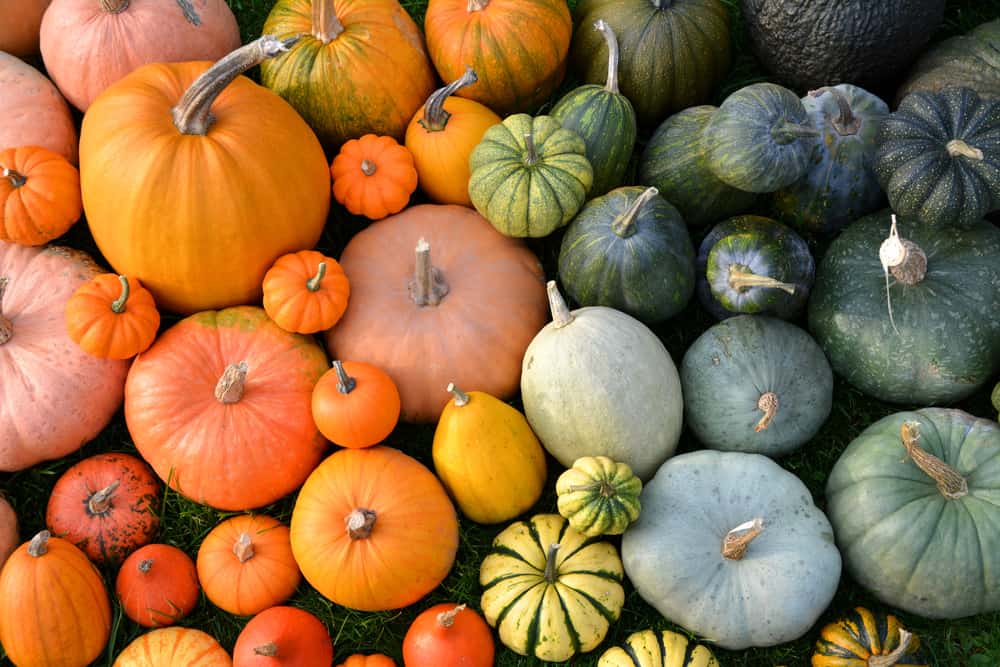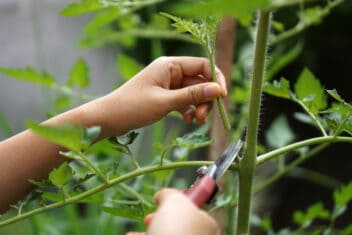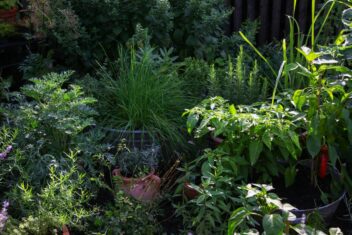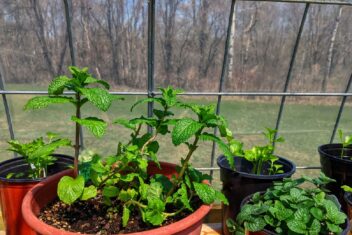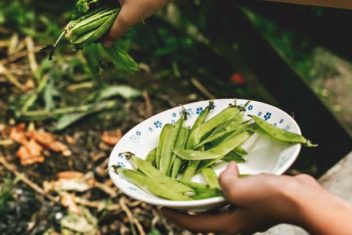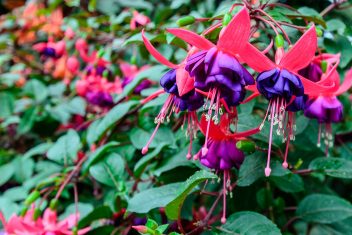When you think of pumpkins, you likely envision the standard orange type we carve at Halloween or bake into pie. But did you know that there are hundreds of different pumpkin varieties? It’s true! They can be tiny or huge, textured or smooth, and range in hues from orange or red through to blue, white, gray, green, and more!
Check out some of the fabulous varieties listed below: you may discover a couple that you’d like to cultivate in your own garden this year.
1. Jarrahdale
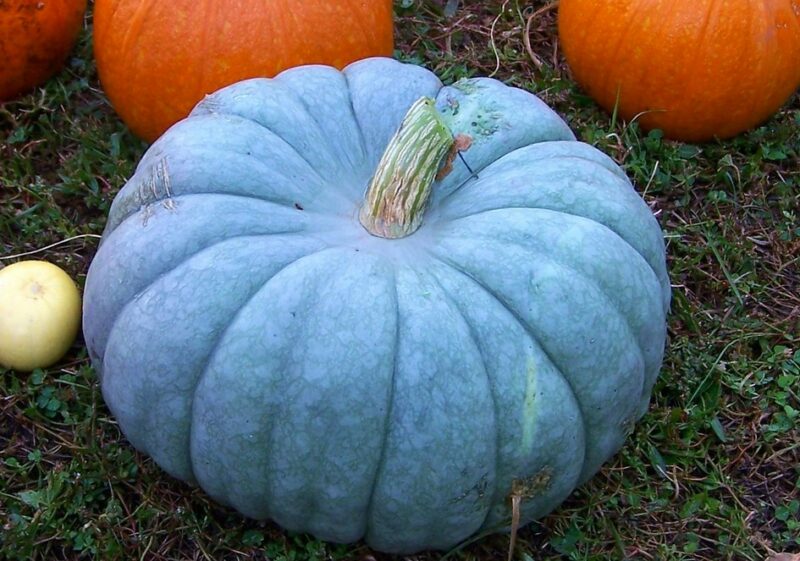
These squat, ridged pumpkins have a gorgeous slate blue-gray rind and deliciously nutty flesh that doesn’t get overly sweet. They’re popular in Australia and New Zealand but are also gaining popularity in the USA.
These pumpkins are excellent for long-term storage, as they can stay fresh in cold cellars or pantries for up to a year after harvest. Their flesh is sweet and tender, and well worth the effort to cultivate them.
2. Tokyo Blue
If you like blue pumpkins, then here’s another one for you. This pre-WWII variety hails from Japan (as you might have guessed) and has sweet, bright yellow flesh within a startlingly blue rind. Whether you like to use your pumpkins for sweet or savory recipes, this is an ideal cultivar for any garden space.
3. Carnival
Do you like color and texture? Then check out Carnival pumpkins. They’re deeply furrowed, with mottled skin featuring cream, yellow, orange, green, and black stripes or spots.
Size-wise, these are one of the smaller pumpkin varieties on this list—around the size of Amish pie pumpkin fruits. Their flesh is dry and mealy rather than sweet, which makes it ideal for soups, stews, and fillings.
Speaking of carnivals:
4. Funnel Cake
There are some truly beautiful pumpkin varieties out there, and this is no exception. ‘Funnel Cake’ pumpkins come in mottled pastel pink, mauve, and powdery blue hues, sometimes with webbing over them.
Their flat shape is often referred to as a “stacking pumpkin” since they can be piled up well without falling over and rolling away.
5. Sunlight
If you love bright, cheerful hues and smaller fruits, check out ‘Sunlight’ pumpkins. They’re quite tiny—only growing to about 5–6 lbs at maturity—with lemon-yellow skins. Their pale orange flesh is fine for either sweet or savory recipes, and the plants are quite resistant to various mildews.
6. Marina di Chioggia
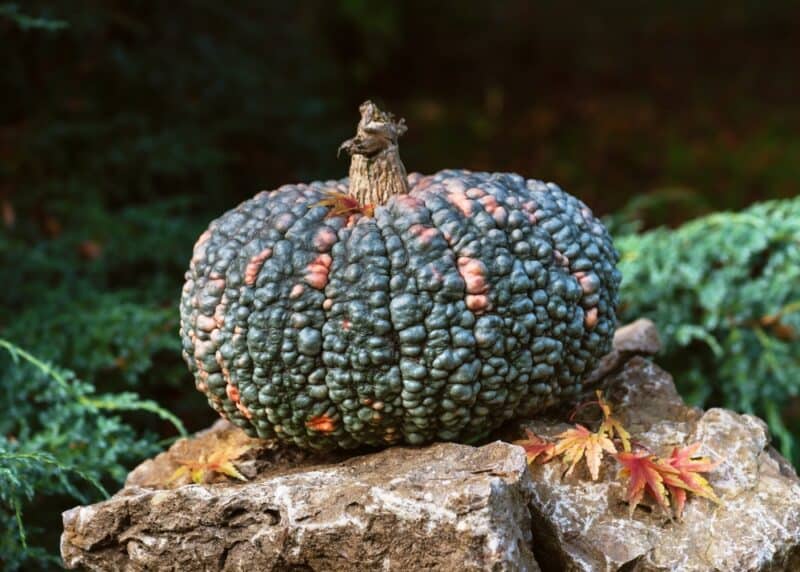
If you’ve ever dreamed of growing pumpkins that look liked goblin tumors, you’re in luck! These Italian pumpkins have been grown in former salt marshes near Chioggia since the 1600s.
The deep, rust-colored flesh beneath the green, warty skin is sweet and mealy and is as delicious roasted with herbs as it is transformed into ravioli filling, or used in baked goods.
7. Batwing
Hey gothic gardeners! If you like the goblin pumpkins mentioned above, then you may also like “batwing” fruits too. They’re one of the smaller pumpkin varieties on this list, weighing in at about 1/4 pound, but they’d make incredible additions to your annual Halloween decor.
8. Casper
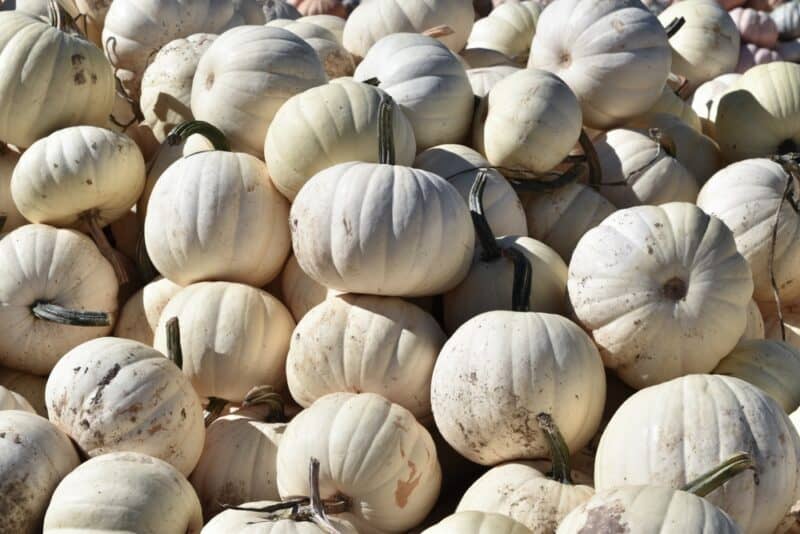
While we’re on the subject of spooky punkins, ‘Casper’ is one you should look into if you like ghostly white vegetables and fruits. These beautiful fruits have pale white skin and silky, super-sweet orange flesh.
9. Troll
Since we’re looking at pumpkin varieties named for ghoulies, ghosties, and things that go bump in the night, let’s not exclude ‘Troll’ pumpkins.
These are very odd looking, with large, blue-ish, button-shaped indentations on their bottoms and deep pink, red, and yellow stripes all over.
That said, they have very dense flesh with next to no seed cavity, and their flesh is drier than most other pumpkins: perfect for baked goods and canning!
10. Midnight
Here’s one more for the gothic/spooky gardening crowd. ‘Midnight’ pumpkins are fist-sized, with black skin and pale orange flesh within. They’re mostly grown for decorations, but are edible if you don’t mind working on a smaller scale.
They tend to be packed with seeds, however, so they’re a good option for seed-loving gardeners out there. Be sure to pick them while they’re still black, however, as they’ll ripen to orange over time.
11. Corn Cob
This is a brand-new hybrid cultivar, and is well-named for its appearance! Of all the pumpkin varieties we’ve come across, this one has the brightest yellow flesh thus far. It’s heavily warted and knobby, rather like a corn cob (hence its name).
12. Yokohama
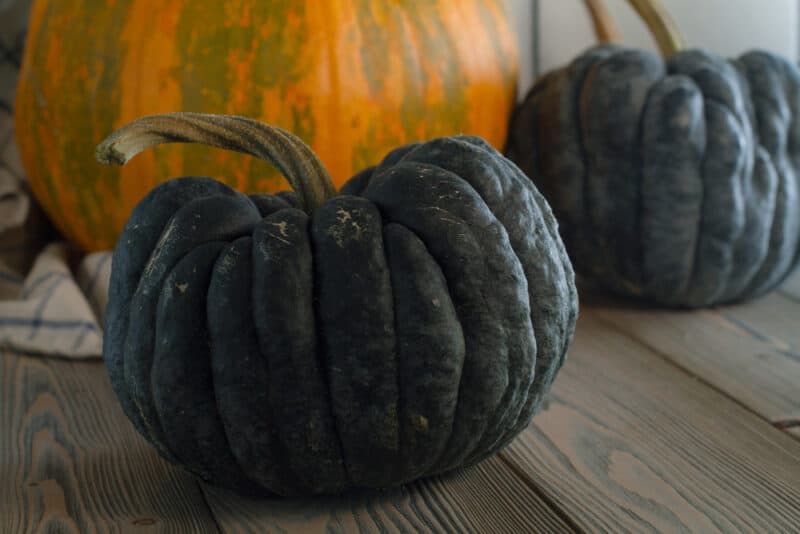
If you like these warty, heavily textured pumpkin varieties, check out ‘Yokohama.’ This cultivar’s color can range from gray or orange-brown to mauve. It’s affectionately referred to as “frog’s back” pumpkin, and its flesh is said to be absolutely exquisite. Apparently, it tastes quite a bit like butternut squash, with notes of Asian pear, avocado, and mango.
13. Turk’s Turban
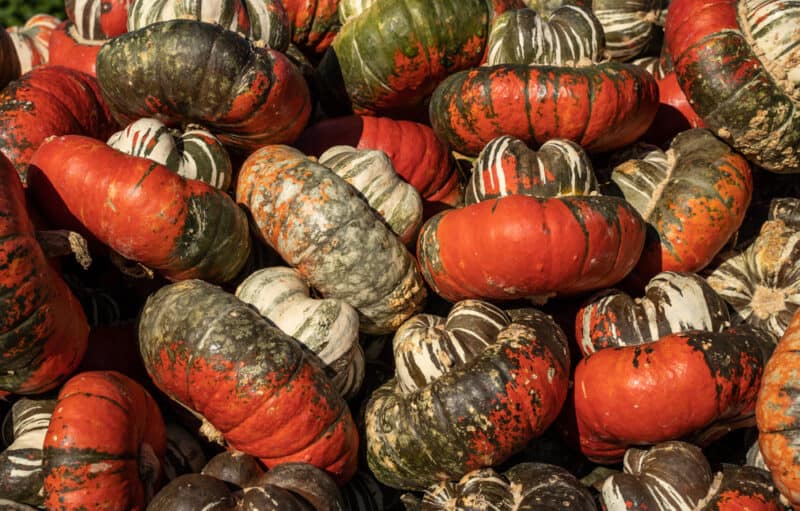
These pumpkins have extruded “button” shapes on their bottoms like the ‘Troll’ cultivar mentioned above, but the entire fruit looks like a hat or a turban (hence its name).
It’s one of the more colorful pumpkin varieties on this list, with variegated red, orange, white, and green hues. The flesh is sweet and nutty, and can be used for sweet or savory dishes.
14. Dutch Crookneck
These pumpkins look absolutely incredible. They have long swan-like necks that curve deeply like shepherd’s crooks, hence their name. Flavor-wise, they taste like a cross between sugar pie pumpkins and butternut squash.
Their seeds are contained in their rounded bases, so you can simply cut the necks off and roast them without any trouble. The flesh is sweet and mealy—excellent in curries, soups, pies, and muffins.
15. Musquee de Provence
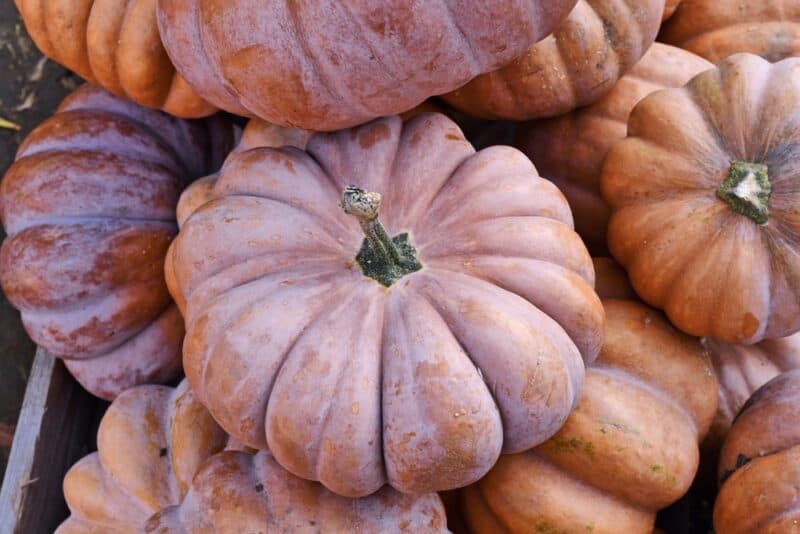
If you’re looking for the ultimate “Cinderella” pumpkin, look no further than the ‘Musquee de Provence’ cultivar. With its rusty brown-orange skin and deep grooves, it looks like the ultimate mystical pumpkin that’ll transform into a carriage with the wave of a wand.
Its dense, deep orange flesh is sweet and silken and makes the most incredible pies and soups.
On the subject of fairytales:
16. Porcelain Princess
Of all the pumpkin varieties on this list, ‘Porcelain Princess’ is one of the prettiest. It has cotton candy-pink skin and rich orange flesh that’s as sweet as its name. The fruits grow to 8–10 pounds each, and are as delicious as they are beautiful to look at.
As a bonus, these plants are quite resistant to both downy and powdery mildew!
17. Blue Doll
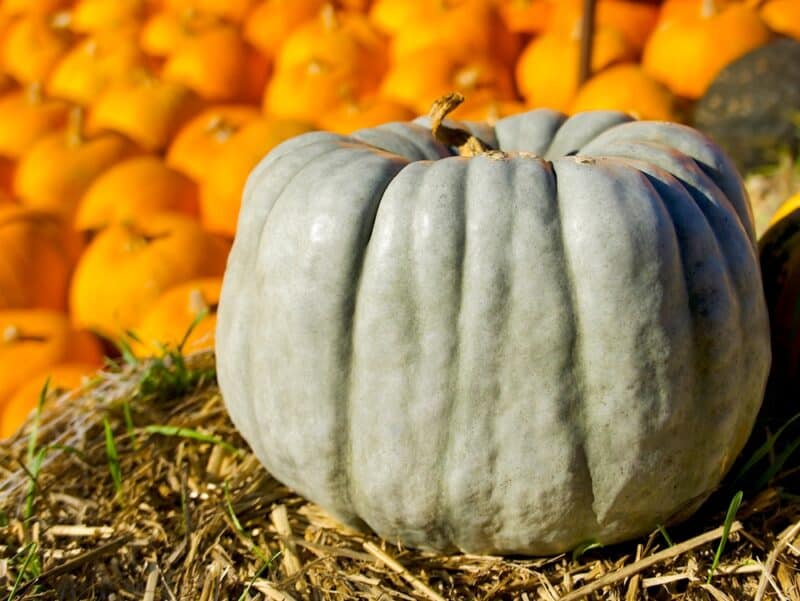
Whereas other “blue” pumpkins on this list are colored like the sky or a robin’s egg, these beauties are more silver in hue. In fact, their skins can range from silver to gray-green, and when the fruits mature, they’re often boxy and square-ish rather than round!
They’re resistant to powdery mildew, and their sweet, dark orange flesh is perfect for baking or canning.
18. Peanut
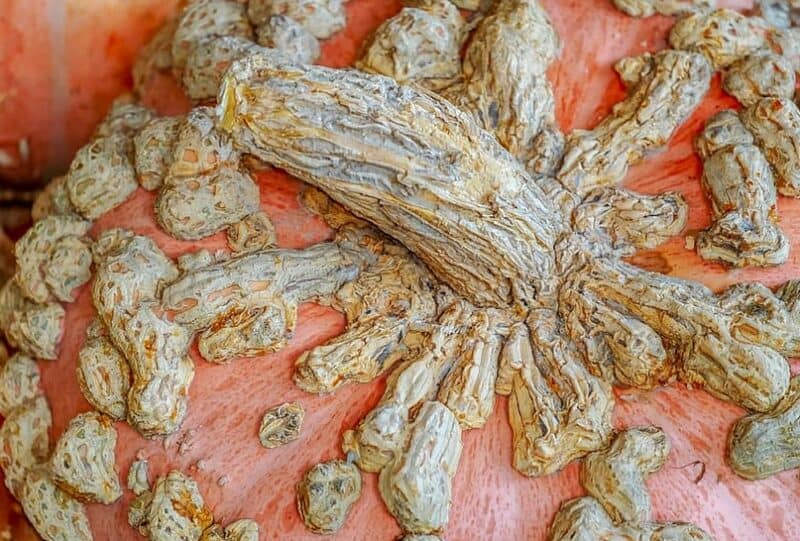
While the official name for this variety is ‘Galeux d’Eysines,’ it’s affectionately known as “Peanut” because of the grey-brown, peanut-shaped warts that grow all over its salmon-pink skin.
Rather than being indicative of some kind of blight, these warts are sugar deposits that indicate the fruit’s sweetness! The more warts you see, the sweeter the flesh within. This is one of the best pumpkin varieties for desserts or sweet soups, as the sugary, succulent flesh is unparalleled in flavor.
19. Long Pie
Whereas most of the pumpkins on this list are round or flat-ish, ‘Long Pie’ fruits are rocket-shaped! They were initially cultivated by Indigenous Peoples around the Great Lakes, and their flesh is sweet, smooth, and almost stringless.
Try roasting and pureeing the flesh as a base for “three sisters” soup, or to use in cornbread pudding with maple or birch syrup.
20. Atlantic Giant
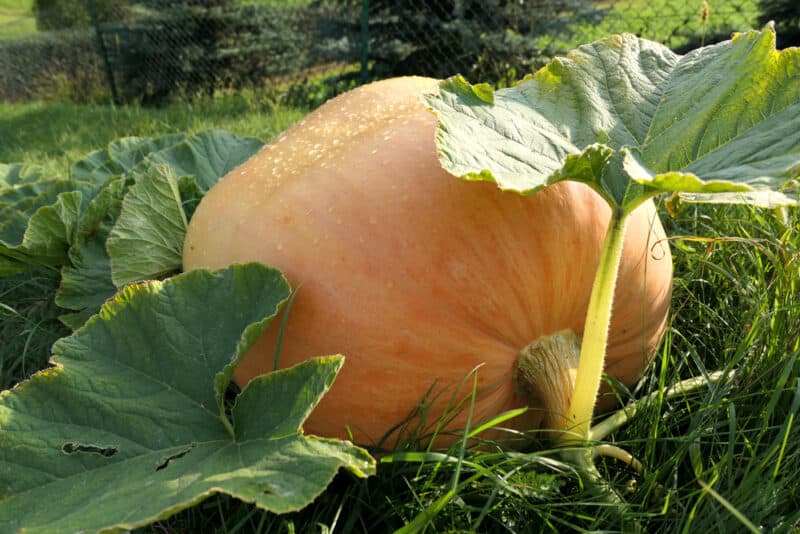
This is one for the books, everyone. If you love humungous produce and you have the time, space, and resources to pour into their cultivation, then heirloom Atlantic Giant pumpkins may be fun for you to grow. The largest grown on record weighed over 1,650 lbs!
Now here’s the best part: while most giant pumpkins have bland, tough, inedible flesh, ‘Atlantic Giant’ pumpkin flesh is quite tasty! The flavor dissipates the larger the pumpkins get, but one massive fruit can feed a startling number of people.
As you can see, pumpkin varieties can come in a wide range of sizes, colors, and textures! If you’re a winter squash fan and want to add more visual interest (or interesting flavors) to your table this year, consider growing a few beauties from this list.
If they grow successfully, save the seeds to share with your friends and family.
